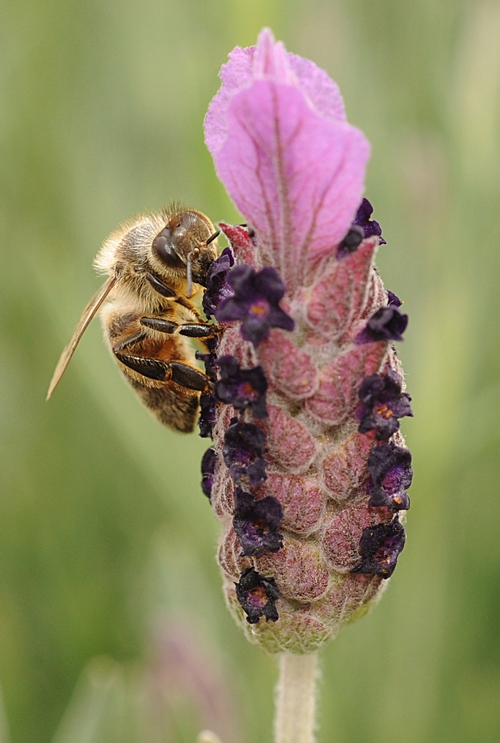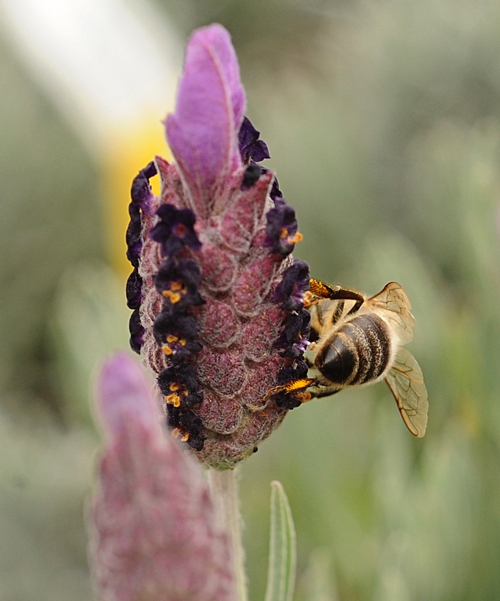Extension apiculturist Eric Mussen, member of the UC Davis Department of Entomology faculty, emphasizes that if you're planting flowers to attract bees--and you should--be sure to remember them in the fall--not just the spring and summer.
In the fall, food is scarce. In the spring and summer, food is abundant.
We're often asked for plant lists. UC Berkeley has an excellent site on urban bee gardens, and the Xerces Society for Invertebrate Conservation has a comprehensive list of what to plant in your area.
The blueprint for what's planted in the Häagen-Dazs Honey Bee Haven, a half-acre bee friendly garden next to the Harry H. Laidlaw Jr. Honey Bee Research Facility, is online (21-page PDF). You can download it and see what's planted there.
Also see California native plants that bees visit on the Laidlaw website.
Another way to come up with what to plant is to visit your local nursery. Observe where the bees are.
A visit today to the Mostly Natives Nursery, Tomales (Marin County), showed the bees all over scores of plants, including lavender (below).
Follow the bees and you'll know what to plant.
Attached Images:

Honey Bee on Lavender

Working the Lavender